Research Article
Review
Issue Editorial Board



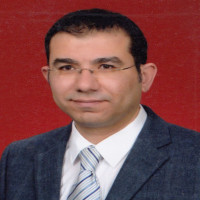
He is an Professor Doctor at Kütahya Dumlupınar University, Chemistry Department, Kütahya, Turkey. He got his BS degree from Gazi University, Ankara, Turkey in 2000. He received his MSc degree from Dumlupınar University in 2003. He received his PhD degree from Ankara University in 2010. His research interests include electrochemistry, electrochemical sensors, conducting polymers, corrosion, and nanotechnology.


I am a Professor of the Industrial Engineering Department at the University of Gaziantep, and Branch Chief of the Logistics Association of Türkiye (LODER). Before joining here, I was at Northeastern University to conduct postdoctoral studies about sustainable production and distribution planning.
I have a diverse background with degrees and experience in environmentally conscious logistics and supply chain management, AI implementations, optimization, and management science. With this multidisciplinary background, I have helped practitioners and policymakers develop decision-making skills and tools to create and manage efficient, resilient, and sustainable supply chains. I have developed and led multidisciplinary teams working on a range of projects related to digital, green, and lean transformation (AI-driven tools and methods) pairing intuition with Al tools, and sustainability.
I am frequently consulted by several businesses, from small and medium-sized companies to ISO 1000 corporations. To date, I have successfully managed over 20 industry and academic projects to completion for which I have received numerous awards from professional associations, research organizations, and government agencies.
I work with university executive teams and industry practitioners on how to translate industry challenges into educational and research opportunities. Through these initiatives, I have secured over $2m in funding from governments and industries.
I was awarded the Science Academy Young Scientist Award in 2016 and the Gaziantep University Science Award in 2017. I have over 100 SCI, and SSCI articles and over 5000 citations. According to the latest research conducted by Stanford University, I am one of the top 2 percent of scientists in the world, I am a TUBITAK and TUSSIDE-approved Model Factory Lean Production and DDX Digital Transformation consultant.
Limonist Meta Technology, based in London, offers artificial intelligence-based digital solutions to different sectors such as construction, carpet, garment, cosmetics, and health.
#logistics #supplychainmanagement #warehousemanagement #stockmanagement #leanmanufacturing #skincaresoftware #VRinconstruction


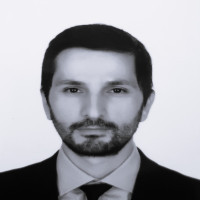

Tolga Ovatman completed his undergraduate education in Hacettepe University Computer Engineering Department in 2003 and moved to İstanbul to continue his graduate education at Istanbul Technical University department of Computer Engineering. After receiving his MSc degree he continued his PhD education at the same department and started working on model based software parallelization for multicore systems under supervision of Dr.Feza Buzluca. During his PhD study he has worked on formal methods and model checking as a visiting researcher in Denmark Technical University and studied parallellizing class diagrams in US Missouri University of Science and Technology. In 2011 he has delivered his dissertation and started working as a lecturer in İTÜ Faculty of Computer and Informatics. He was later recruited as an associate professor in the same faculty on January 2019.



 Web
Web
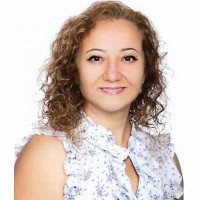

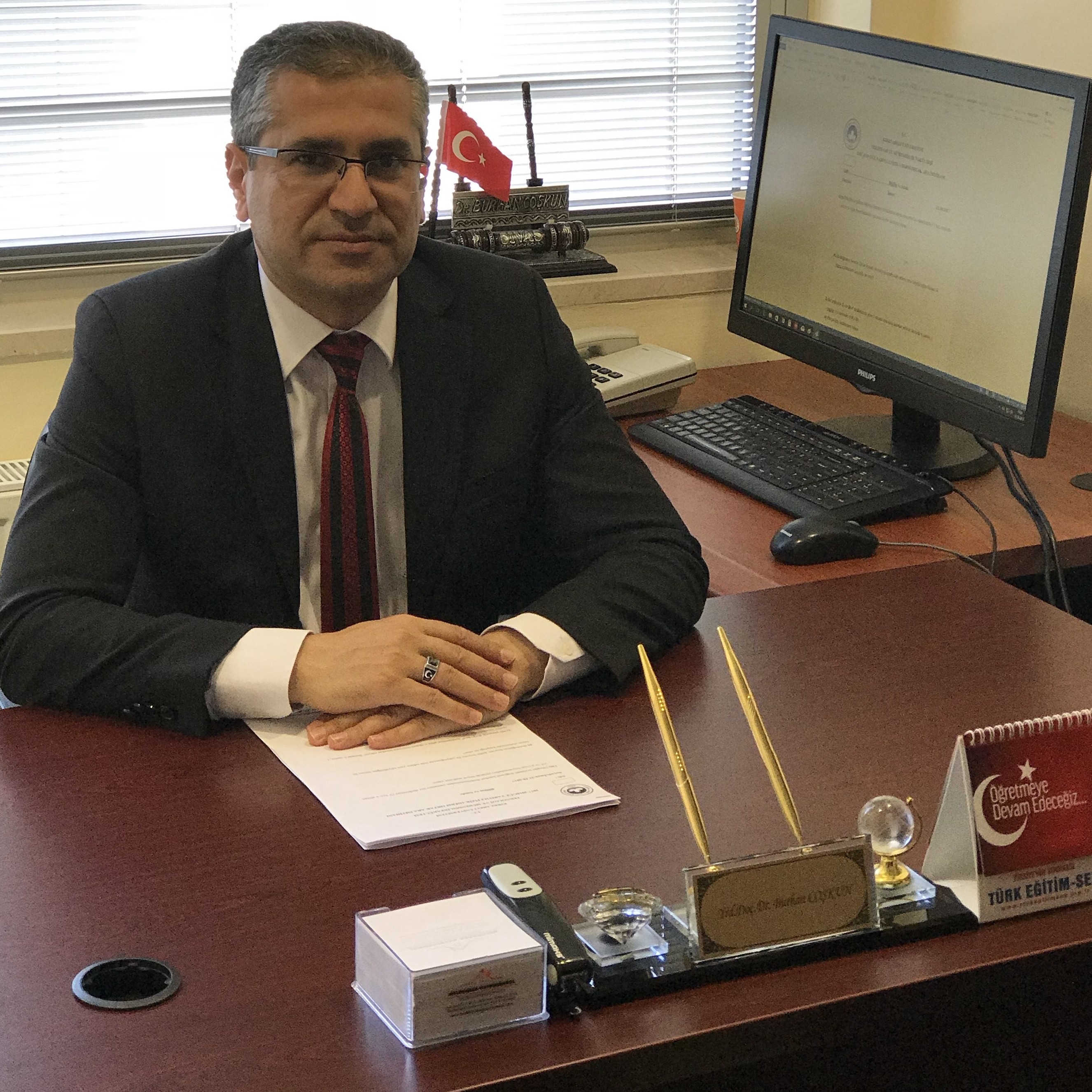
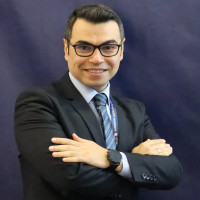






 Web
Web




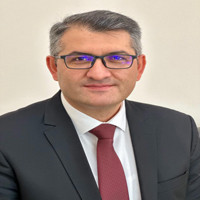
Dr. Volkan Kilicli is an Associate Professor at the Department of Metallurgical and Materials Engineering at Gazi University, Ankara, Turkey. He received his B.Sc., M.Sc., and Ph.D. degrees in the same department in 2001, 2004, and 2010, respectively. He worked at the Department of Materials Science&Engineering University of Wisconsin-Milwaukee (UWM) for one year as a postdoctoral fellow. His areas of interest are materials characterization, semi-solid processing of aluminum alloys, self-healing metallic materials/metal matrix composites, and heat treatments of cast irons and steels.

Erdal Irmak, Senior Member of IEEE, earned his BSc degree in Electrical Education from the Faculty of Technical Education at Gazi University, Türkiye, in 1997. Subsequently, he pursued his MSc and PhD degrees in the same field at the Gazi University Graduate School of Natural and Applied Sciences, in 2001 and 2007, respectively. His expertise covers power system operation and control, voltage and frequency stability, the integration of renewables into power systems, the design of virtual and remote labs, and the cybersecurity of critical infrastructure. He has authored or co-authored over 130 research papers, most of which are indexed in WoS. Dr. Irmak has led and contributed to various projects, spanning from power system stability, microgrid development and real-time pricing optimization in smart grids to solar cell technology. He has played key roles in IEEE-supported conferences including GPECOM, ICRERA, and ICSMARTGRID. Currently, he is full-time Professor in Electrical and Electronics Engineering Department of Gazi University.




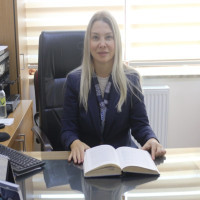
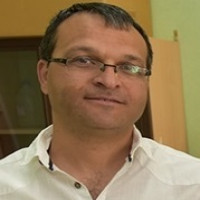





 Web
Web

Dr. Derya Güleç Özer, 2004 yılında ODTÜ’den lisans, 2007 yılında Gazi Üniversitesi’nden yüksek lisans ve 2014 yılında İTÜ Mimari Bilişim Bölümü’nden doktora derecelerini aldı. 2015 yılında MIT, Boston’da doktora sonrası çalışmalarına devam etti ve burada dijital miras araştırmaları yürüttü. Araştırma ilgi alanları arasında mimarlık eğitimi, bilgisayar destekli tasarım, dijital miras çalışmaları, robotik ve sürdürülebilirlik bulunmaktadır. Çok sayıda mimarlık yarışmasından ödüller kazanan Dr. Özer, hâlâ İstanbul Teknik Üniversitesi Mimari Bilişim Programı'nda öğretim vermektedir.



Aim & Scope
The scope of the “Gazi University Journal of Science” comprises such as original research on all aspects of basic science, engineering and technology. Original research results, scientific reviews and short communication notes in various fields of science and technology are considered for publication. The publication language of the journal is English. Manuscripts previously published in another journal are not accepted. Manuscripts with a suitable balance of practice and theory are preferred. A review article is expected to give in-depth information and satisfying evaluation of a specific scientific or technologic subject, supported with an extensive list of sources. Short communication notes prepared by researchers who would like to share the first outcomes of their on-going, original research work are welcome.
“Gazi University Journal of Science” is a peer reviewed international journal.
Author Guidelines
PUBLICATION ETHICS
National and international ethical rules should be observed.
Because of our publishing policy, adaptation to research and publication ethics is an essential requirement.
MANUSCRIPT SUBMISSION
Gazi University Journal of Science (GUJS) has a fully online submission and online reviewing system. This system offers authors the option of tracking by online based review process of their manuscripts. All manuscripts must be submitted with online from the system by registering.
The manuscripts submitted for the publication should correspond to the scope of The Gazi University Journal of Science (GUJS). The journal covers theoretical and some applied aspects of science and technology; it informs the reader of new trends in basic science and technology.
Contributions to the “Gazi University Journal of Science”(GUJS) will be published in English, and manuscripts must be submitted in that language. Either standard British or American spelling is acceptable, provided its use is consistent within the manuscript.
The article must conform to the template found on the Required Files page.
Initial Lay-out
This journal follows a double-blind reviewing procedure. Authors are therefore requested to submit:
A blinded manuscript without any author names and affiliations in the text. Self-identifying citations and references in the article text should be avoided.
A separate title page, containing title, all author names, affiliations, and the contact information (e-mail, telephone number and fax number) of the corresponding author. Any acknowledgements, disclosures, or funding information should also be included on this page.
The other headings should be written with uppercase letters starting from a new line. Other than the main heading, all headings should be written with lowercase letters except the first letter of the heading.The author to whom correspondence should be addressed must be indicated by an asterisk. Acceptable similarity rate for the article is ≤ 20%.
Abstract
Research papers and reviews begin with an abstract (250 words) which should comprise a brief factual account of the contents of the paper, with emphasis on new information. Abbreviations and jargon must not be used. The abstracts should be suitable for use by abstracting services without rewriting. Abstract for a maximum of 250 words should be placed after the address of the author and one blank line. After one blank line from the abstract Key Words be written italics.
Keywords
Key words reflecting the major features of the work should be inserted, but not more than five.
THE TEXT
This is the numbered part of the manuscript which may include the parts: 1. Introduction, 2. Experimental (Material and Methods) 3. Results and Discussion, 4. References. The text may include sub headings with the following numbering style (2.1, 2.2,…etc.).
Introduction
Every paper must have a concise introduction explaining the state of the art of the topic described, and stating clearly what is new in the paper now submitted.
Experimental (Material and Methods)
The experimental methods and the materials used should be described after the introductory paragraphs. Detailed technical descriptions should be restricted to one section of the paper, and not scattered throughout the text. Sufficient information should be given to allow any reasonably experienced worker to carry out the procedure. Detailed descriptions of well-known techniques and equipment are unnecessary, as are simple preparations of reagents or solutions, and lists of common materials. In writing, complete sentences should be used. If an ethics committee permission is required for the study, the ethics commission date-number should be indicated.
Results and Discussion
Preferably these should be treated together to avoid unnecessary repetition. Unsupported elaboration of hypotheses and verbose exposition of ideas should be avoided. Results and Discussion may be presented in different sections.
Acknowledgements
If any support is given to the work by an institution or a person, it should be indicated as acknowledgement in the manuscript. Acknowledgements should be kept as short as possible, and placed at the conclusion of the text.
Conflict of Interest
No conflict of interest was declared by the authors.
References
Literature references are to be numbered consecutively and should be grouped together at the end of the paper under the heading “References”. In the text references are quoted by giving the corresponding numbers of the references list as Arabic numerals in square brackets.
If the reference is a journal paper: Author surname, first name initial(s), title of the paper, journal name, volume number, pages, year.
Goto, S., Levec, J. and Smith, J.M., “Mass transfer in packed ebds with two-phase flow”, Ind. Eng. Chem. Process Des. Dev . , 14(2): 473-485, (1975).
If the reference is a book: Author surname, first name initial(s), title of the book, volume number, editor(s) (if provided), place of print , page interval, year.
McAdams, W. H., Heat Transmission 2 nd ed. , McGraw Hill, New York, (1942).
If the reference is a printed thesis: Author surname, first name initial(s), title of the thesis, thesis type (MSc. or Ph.D), institute submitted, place, page interval, year.
Tezcan, L., “Mathematical Modeling of Karst Aquifer Systems with the Use of Tritium Isotope”, Phd.Thesis, Hacettepe University Institute of Science and Technology,Ankara, 10-15 (1993).
If the reference is a congress presentation: Author surname, first name initial(s), title of the presentation, name of the congress, seminar or conference, place, page interval, year.
Toppare, L., “4-bromstrien and a-metilstiren Copolimerization with Electrochemical Process”, II. National Macromolecule Symposium, İzmir, 85-96, (1985).
If the reference is a source publication: Author surname, first name initial(s), report name, name of the organization (if the report is prepared by an organization), report number (if applicable), place, page interval, year.
Baran, I. and Kasparek,M., “Marine Turtles Of Turkey; Status Survey 1988 And Recommendations For Conservation And Management”, WWF Report , Heidelberg, 123-130, (1989).
If the reference is a daily magazine or newspaper:
Corliss, Richard, Sept. 13, Pacific Overtures Times, 142(11): 68-70 (1993).
For Electronic Encyclopedia and books:
Internet: Bosnia and Herzegovina, In Britannica Online.http://www.-eb.com:180/cgi-bin/g?DocF=micro/79/88.html , (2000).
Articles not yet published should be given as “accepted” or “in press” only if accepted for publication. Otherwise, unpublished articles should be referred to as “submitted for publication”, “in preparation” or “personal communication”, as appropriate.
For Web Page
https://dergipark.org.tr/tr/pub/gujs. Access date: 09.12.2019.
Figures and Tables
Figures, graphs, photographs and tables in JPG or TIFF format should be given inside (not a seperate page) the manuscript. The photographs should be scanned and submitted as original copies. All figures and tables should be numbered consecutively in Arabic numerals throughout the paper. Footnotes to tables should be with lower-case letters. Line drawings are preferable to photographs. Scanned graphs are less preferred and acceptable only if adequately resolved. Inscriptions should be clearly legible. Letters 2–3 mm high are recommended in the desired final size. Half-tone illustrations, if any, should be well contrasted and trimmed at right angles in the desired final size. Graphs should not be present in large format (e. g. A4 full size), but rather in a typical size of 6—8 cm.
Nomenclature, symbols and abbreviations
In general, the recommendations of the SI units should be followed. Symbols, formulas and equations should be written with great care, capitals and lower case letters being distinguished where necessary. Particular care should be taken in typing mathematical expressions containing superscripts and in proof-reading such equations.Mathematical expressions should be written by an equation editor (Word format) in 9 point size. Indices font should be 8 point size. Each equation in text should be numbered in parenthesis ( ). Unusual symbols employed for the first time should be defined by name in the left-hand margin. Abbreviations require definition when first used.
Note: Authors must suggest at least three potential reviewers from different geographical locations. These should be experts in their field, who will be able to provide an objective assessment of the manuscript. Any suggested peer reviewers should not have published with any of the authors of the manuscript within the past five years, should not be current collaborators, and should not be members of the same research institution. Suggested from you reviewers will be considered alongside potential reviewers recommended by the Editorial Board. Authors must add the name, address and e-mails of reviewers to the part of "Author Comments" during the submission of the manuscript.
Ethical Principles and Publication Policy
Ethical Guidelines for Peer Reviewers
Ethical Guidelines for Peer Reviewers
1) The manuscript must be related to your area of expertise. Only accept if you can provide a high quality review.
2) If you have a potential conflict of interest, you must inform the editor when you respond.
3) Make sure you can allocate enough time since reviewing process can be a lot of work.
4) Before you commit, make sure you will be able to meet the deadline.
5) Invitations must be replied as soon as possible. Late invitation responses decelerate the review process.
6) If you decline the invitation, suggest for alternative reviewers.
When You Agree to Review
1) The material you receive is confidential, which means that it is not to be shared with other parties without getting authorization from the editor.
2) Any information regarding your review also cannot be shared with anyone without informing the editor and the author(s) as peer review is confidential.
Before you start
1) Read the article to get an overall idea
2) Take a break from it
3) Give yourself some time to think
4) Reread the article again in detail
5) Consider the article from your perspective
6) What the journal is looking for must be regarded when you start writing your review
7) Have a copy of a reviewing criteria that you need to use
Your review report
1) Your review article is highly important as it helps the editor decide whether or not to publish the article
2) It is necessary to give your opinions and observations on the article.
3) Highlighting any deficiencies is a must
4) Explain and support your judgment
5) Editor(s) and author(s) should be able to understand the reasoning behind your comments
6) Indicate whether your comments are your opinions or reflected by data
7) Providing constructive feedback and commenting in a courteous manner is essential
8) Do not include any personal remarks and/or personal details
9) Do not add your name in your comments
Checklist
1) Write a brief summary showing the editor(s) that you have read and fully understand the material
2) Give your overall opinion of the research and include whether:
· It is novel and/or interesting
· It has an impact
· Contributes to the knowledge base
3) In your commentary include your opinions on layout and format, title, abstract, introduction, graphical abstracts and/or highlights, method, statistical errors, results, conclusion/discussion, language and references.
4) Mention any journal specific points. If it happens to adhere to the journal’s standards, write it in your review
5) If there is an issue of plagiarism, fraud or have other ethical concerns, share your suspicions with the editor in detail.
Your recommendation
Considering the categories the editor most likely uses for classifying the article:
Accept without revision
Accept with minor/major revision (explain the revision required, and indicate to the editor whether or not you would be happy to review the revised article)
Reject (explain reason in report in detail)
The final decision
It is editor’s decision whether to accept or reject the article. The editor takes all views and may call for a third opinion or ask the author for a revised paper .The online editorial system provides reviewers with a notification of the final decision, if the journal has opted in to this function. If this is not the case, you can contact the editor to find out if the article was accepted or rejected.
Plagiarism prevention with iThenticate
iThenticate compares every submitted paper to a massive database of content from over 90,000 major newspapers, magazines, scholarly journals, and books as well as a database of over 14 billion current and archived pages of web content. In addition, iThenticate checks materials from over 50,000 scholarly journals and more than 150 STM publishers.
The similarity rate of the articles uploaded to our journal is determined by the iThenticate program.
The editorial board of GUJS journal complies with the following rules for plagiarism policy;
- The authors are asked to reduce the similarity of their articles below 20%, and three rights are granted for a week for similarity to be <20%.
- Only articles with a similarity rate ≤ 20% are taken into the review process.
- The above mentioned rules are accepted by all authors who have uploaded articles to the GUJS journal.
ICMJE & COPE
In scientific papers to be sent to our journal,
* Recommendations from the International Committee of Medical Journal Editors (ICMJE) should be considered.
http://www.icmje.org/news-and-editorials/icmje-recommendations_annotated_dec17.pdf
* COPE (Committee on Publication Ethics)'s "International Standards for Editors and Authors" should be considered.
https://publicationethics.org/about/guide
Price Policy
Publishing articles in journal of GUJS, downloading and reading of articles is free of charge and also no article processing and publishing charges.